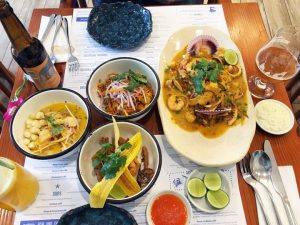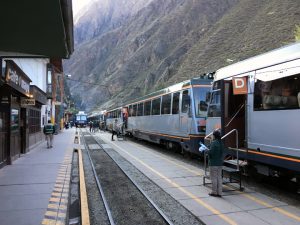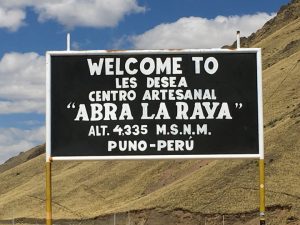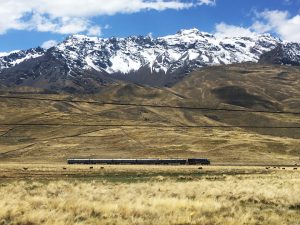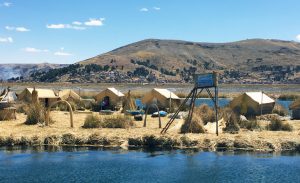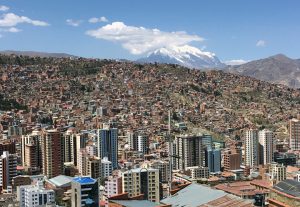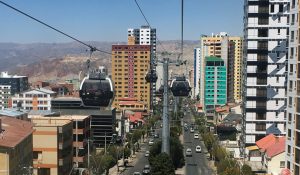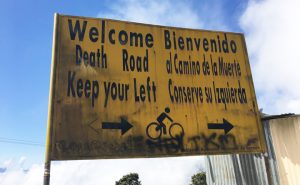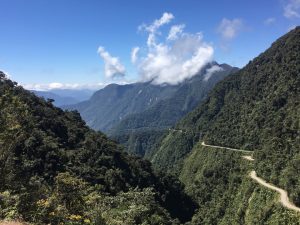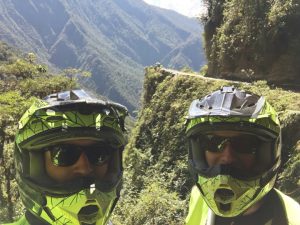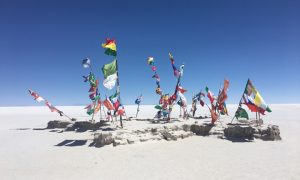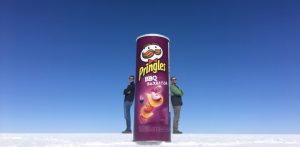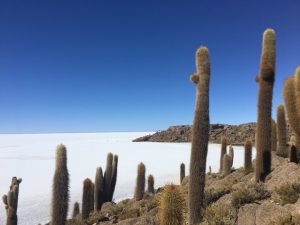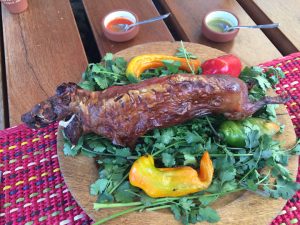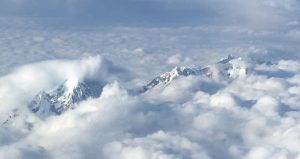Machu Picchu is the iconic travel destination, Bolivia is the hidden gem, and Lake Titicaca straddles them both!
Cusco is the requisite stop on the way to Machu Picchu, and it was a fantastic city. The food, especially the ceviche, was incredible.
Food pix never do the meal justice, but trust me, it was tasty! After exploring Cusco, we caught a train through the Andes and made it to Agua Calientes, a hive of travelers placed below Machu Picchu.
And then… Machu Picchu. The internet is rife with Machu Picchu pictures, but it’s worth adding a few more. With an elevation of almost 8,000 feet and enough water, land, and rock to sustain a small city, it’s truly a wonder of the world.
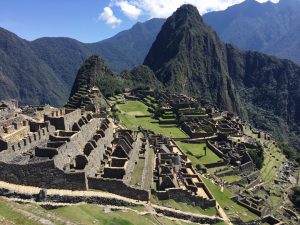
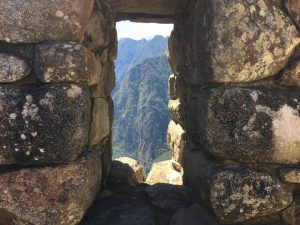
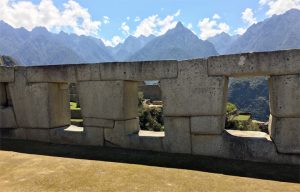 After a day of taking in the sights, we hit the dusty road back to Cusco. We met many people fresh off the Machu Picchu Trail, ended their trek at Machu Picchu. If I had time, I would love to have done that, but alas I did not. The next day we hitched a bus ride across the high planes of Peru, via Abra la Raya at 14,222 feet, to Puno on the Peru/Bolivia border.
After a day of taking in the sights, we hit the dusty road back to Cusco. We met many people fresh off the Machu Picchu Trail, ended their trek at Machu Picchu. If I had time, I would love to have done that, but alas I did not. The next day we hitched a bus ride across the high planes of Peru, via Abra la Raya at 14,222 feet, to Puno on the Peru/Bolivia border.
Beautiful Andes Mountains.
The border city of Puno is right on Lake Ti-ti-ca-ca! The highest navigable lake in the world at 12,507 feet. We’ve heard of the floating islands growing up, and we finally got to see them.
The islands are reeds bound together, floating on top of the water, and anchored to the lake floor by ropes. Unfortunately, the island culture is now dominated by tourists taking pictures of the islands, so the sight was bitter-sweet. But after Lake Titicaca, Bolivia!
La Paz is a sprawling city located in the Andes of about 2.3 million people resting at 12,000 feet. The city recently installed cable cars the navigate the city instead of bus or taxi, they were amazing!
La Paz
Cable Cars down a main street
Outside of Lap Paz is the famous Death Road. This used to be a main thoroughfare outside of La Paz until a modern highway system was built. When it rained, cars passing each other would fall off the cliffs and fall hundreds of feet. Now that a paved highway system exists, Death Road is used for the occasional car and now for bikers looking to conquer it!
Our last stop in Bolivia were the Uyuni Salt Flats, and truly the hidden gem of the trip! There’s supposedly enough salt to feed humanity for 5000 years. The locals scrape some of the salt from the flats and sell at market. It’s also a place to take incredible photos!
As the trip winded down, we headed back to Peru and there was one last check in the box, a Guinea pig lunch! It was kind of weird…
All good things come to an end, but on the flight home I caught one last look at the Andes. Adios Peru y Bolivia!

